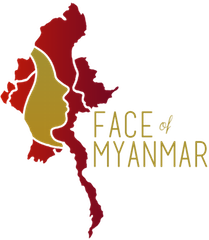Hi everyone!
Welcome to Face of Myanmar! We are so happy you’re here exploring our site and supporting our expedition!
Beginning this April our team will set out on a three month journey to explore the previously isolated nation of Myanmar. Myanmar is a dynamic country made up of over 135 ethnic groups. Its ethnic diversity is further compounded by various degrees of social unrest charged by a fragmented military regime and underlying religious strife. Our goal is to get past political and religious factors in order to capture the distinct beauty that is Myanmar.
Our concentration on this expedition will be to utilize photography and conversation to document the Burmese peoples’ use of Thanaka paste. Thanaka paste is made of ground Thanaka tree bark. A tradition they have used for over 2,000 years. The paste was historically used as a natural sunscreen but has since become a type of cosmetic. People throughout Myanmar wear Thanaka paste as a way to express their beauty both individually and collectively.
As the use of Thanaka paste is deeply rooted in historical customs, you may be wondering why we have chosen this April to make our trek. There are many factors, but the main urgency driving our journey is the country’s recent push towards modernization.
Until 1948 the country of Myanmar was a British colony known to the world as Burma. Post-colonized Burma was known as a bed of opportunity with rich cultural and natural resources, and was projected to be the most prosperous country in Southeast Asia. Comparing modern Myanmar to the current social, political and economic climates of neighbors like Thailand and India, it is clear that this projection fell short of realization. This is because unlike Thailand and India, soon after gaining freedom, the political system in Myanmar was taken over by a military regime. The regime made its international policy one of isolation. So for the past 50+ years, the Burmese people have been cut off from the world. Though fifty years may seem insignificant in the grand scheme of humanity, it has been a particularly eventful fifty years. In this time the world has globalized and modernized at exponential rates.
We have landed on the moon, invented cellular phone systems, credit cards, the internet, and YouTube; we have millions of ways to communicate and influence people all over the world with just a few, simple clicks. Myanmar on the other hand has not been a part of this move towards global culture – they are in a sense exactly where they were left sixty years ago. Walking into the outskirts of Myanmar is like looking back in time. Many people still wear traditional clothing and generally work in the same professions their grandfathers and grandfather’s fathers worked before them -- but this is all changing and is changing quickly.
Our team’s goal is to capture Myanmar’s current state before this change and ultimate modernization/Westernization takes over. We want to document the rich culture and varying ethnicities as they are naturally before it becomes a country overrun with tourists. We plan to enlist the assistance of local guides (as is legally required) and fellow travelers as we embark on this three month journey to preserve the memory and the images of these culturally unique groups.
You can explore more of Myanmar’s history, our route, cultural issues and other wonderful bits further on our site. Check out our profiles and expect a more in-depth team blog coming soon!
Our Indiegogo page launches this Monday, February 2nd, and the fundraising campaign will begin! We have 50 days to raise $9,000! So please check us out, give what you can, and spread the word! Share our adventure with your friends, family, and acquaintances!
Don’t forget we are also sharing via Facebook, Instagram, and Twitter for faceofmyanmar, #faceofmyanmar.





